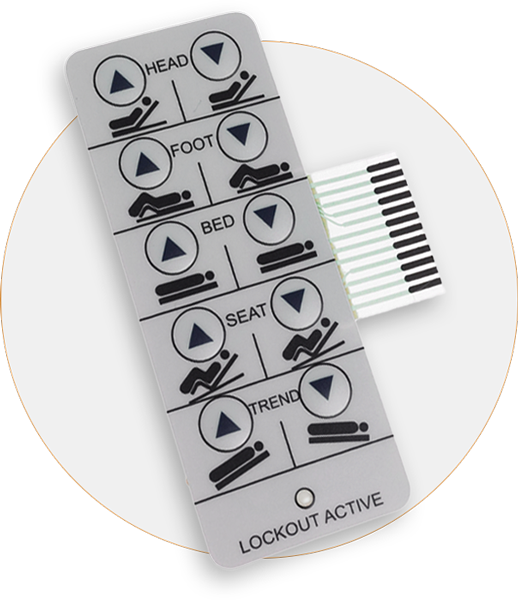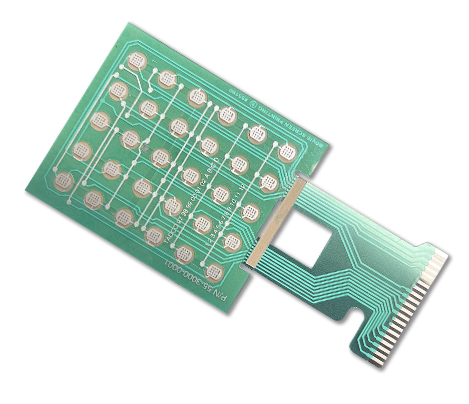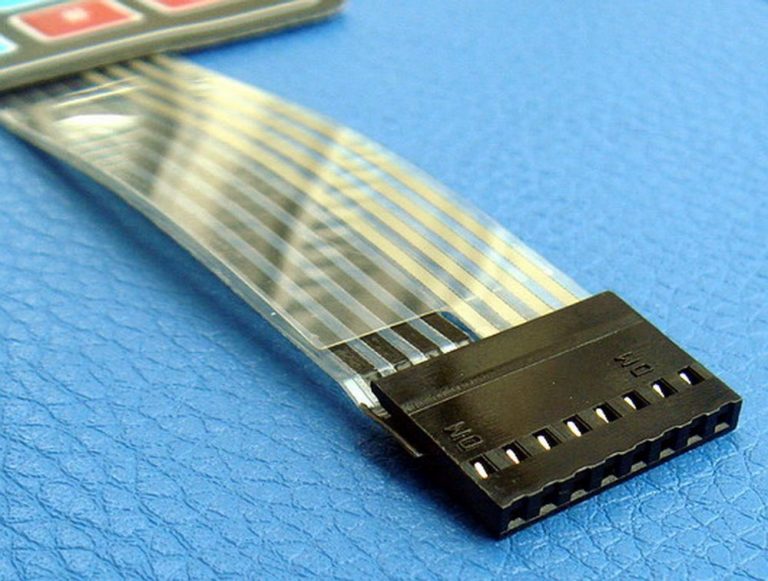How Membrane Switches Are Used in Medical Devices and Equipment
Recognizing the Relevance of Membrane Switches in Interface
Membrane buttons are integral parts in the design of effective user interfaces, assisting in not just functionality however likewise enhancing visual allure and user communication. Their one-of-a-kind attributes, such as resistance to ecological aspects and personalized styles, make them ideal for a varied selection of applications across numerous sectors. As we explore the future trends and different advantages connected with Membrane technology, it ends up being clear that these switches are a lot more than simply components; they stand for a merging of advancement and practicality. The ramifications of this technology on individual experience deserve taking a look at further.
What Are Membrane Switches?

The spacer layer, which contains glue residential or commercial properties, enables the separation of the circuit layer from the overlay, guaranteeing that the switch stays in a non-activated state up until pushed. When pressure is used to the overlay, it compresses the spacer layer, linking the space and completing the circuit in the underlying layer. This design not only decreases the physical room required for conventional mechanical switches yet likewise boosts the resilience of the gadget, as Membrane buttons are generally resistant to dirt, wetness, and various other ecological elements.
Typically discovered in applications varying from consumer electronic devices to clinical gadgets, Membrane buttons are important to modern innovation, supplying a straightforward and effective interface that aligns with contemporary design demands.
Advantages of Membrane Buttons
While countless switch technologies exist, Membrane Switches deal unique benefits that make them specifically preferable in numerous applications. Among the main benefits of Membrane switches is their portable layout, which enables space-saving executions in devices where property is restricted. Their slim profile not just boosts aesthetic allure however likewise promotes lightweight building and construction.
Another significant advantage is their resistance to environmental factors. Membrane switches are generally secured versus moisture, dirt, and contaminants, making them optimal for usage popular environments, such as medical gadgets and commercial devices. This durability expands the life expectancy of the switch, lowering maintenance expenses and improving reliability.
Moreover, Membrane buttons can be personalized to meet details layout requirements, incorporating distinct graphics and colors that boost user communication. Their responsive comments choices can likewise be tailored to offer a rewarding customer experience. Furthermore, Membrane buttons are affordable, especially in high-volume applications, as they can be created effectively.
Applications in Different Industries

In the customer electronic devices field, Membrane switches are prevalent in tools such as microwaves, cleaning equipments, and remotes. Their responsive feedback and aesthetic choices improve individual experience while providing a streamlined, modern-day look. In addition, vehicle manufacturers use Membrane switches in dashboard controls and infotainment systems, where area is limited, and individual engagement is crucial.
Moreover, the commercial market leverages Membrane switches in control panels for equipment and equipment, enabling user-friendly operation in typically extreme atmospheres. Their resistance to chemicals and dampness makes certain longevity and integrity in these applications. In general, the adaptability of Membrane Switches contributes dramatically to their extensive usage, making them essential in numerous technological domains.
Style Considerations for Membrane Buttons

When designing Membrane buttons, several crucial considerations need to be thought about to ensure optimal my link functionality and customer experience. The option of materials is important; picking resilient, premium substrates can improve the switch's long life and resistance to environmental aspects such as dampness and temperature level changes.
Second of all, the layout of the graphic overlay must focus on clarity and convenience of usage. Symbols and message need to be understandable, and the design ought to help with user-friendly interaction (membrane switches). Additionally, responsive comments is crucial; including a responsive dome or other mechanisms can improve the find out this here user experience by giving physical confirmation of activation
Another important element is the button's electric performance. Designers should ensure that the conductive traces are appropriately developed to minimize resistance and stay clear of signal interference. This includes assessing the required actuation pressure and ensuring compatibility with the digital components they will user interface with.

Future Fads in Membrane Innovation
As innovation continues to development, Membrane buttons are positioned to develop significantly, driven by technologies in materials and manufacturing strategies. One emerging fad is the unification of sophisticated products, such as adaptable substrates and conductive inks, which enhance durability and reduce the overall weight of Membrane switches. These products not just improve the tactile feedback yet also enable the design of switches that can hold up against harsher environmental conditions.
In addition, the assimilation of touch-sensitive technologies is changing typical Membrane Switches into more interactive user interfaces. Capacitive touch sensors why not find out more installed within Membrane button panels can give a more responsive and intuitive user experience, straightening with the growing demand for sleek, modern-day layouts in consumer electronic devices.
Furthermore, developments in printing techniques, such as digital and 3D printing, make it possible for fast prototyping and personalization of Membrane buttons. This versatility permits suppliers to respond faster to market needs and consumer preferences.
Lastly, sustainability is coming to be a substantial emphasis, with makers exploring green materials and processes. As these patterns unravel, the future of Membrane technology promises enhanced functionality, visual charm, and environmental duty, strengthening their role in sophisticated interface across various markets.
Conclusion
In verdict, Membrane Switches represent a crucial component in the design of individual interfaces, combining capability with visual adaptability. As advancements in innovation continue, the evolution of Membrane buttons is expected to more refine user interfaces, driving development and enhancing usability in an increasingly complicated technical landscape.
Membrane buttons are indispensable elements in the layout of efficient individual interfaces, facilitating not only capability however also boosting visual allure and customer communication.Membrane Switches serve as a vital part in different user interfaces, facilitating a seamless communication between individuals and digital devices.While countless button modern technologies exist, Membrane Switches offer distinctive benefits that make them particularly desirable in various applications.Furthermore, Membrane buttons can be tailored to satisfy specific layout requirements, incorporating unique graphics and shades that boost individual interaction.In conclusion, Membrane Switches stand for an essential part in the layout of customer interfaces, incorporating functionality with aesthetic flexibility.